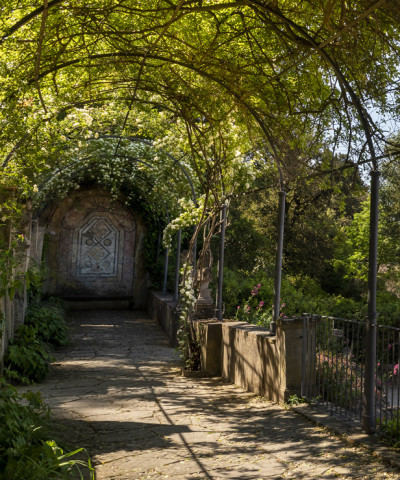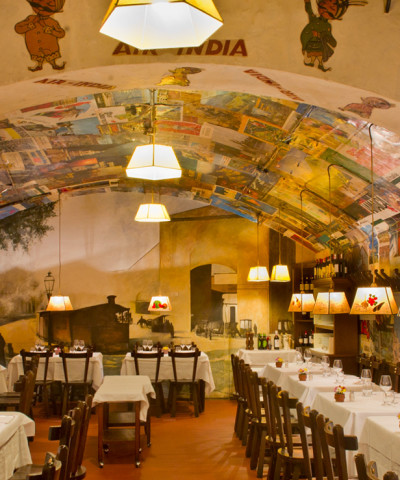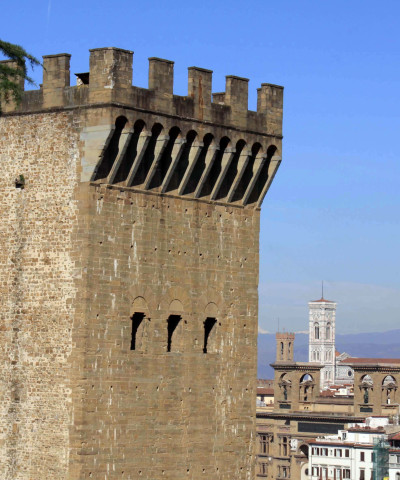The Bardini Garden, a unique place in the Florentine Oltrarno
A historic garden with a breathtaking view of the city and a beautiful wisteria arbour
One of the most famous and beloved gardens in Florence. The best time to visit the Bardini Garden is in late April, when the wisteria bloom. although this year it is already at its peak blooming now. The result is a vegetal tunnel of shades of violet and pink.
The property was purchased by Stefano Bardini in 1913 from the Mozzi family. The broad space bounded by the houses on Via Bardi and Costa San Giorgio yet affording breathtaking views over the city was transformed into an extensive outdoor showroom.
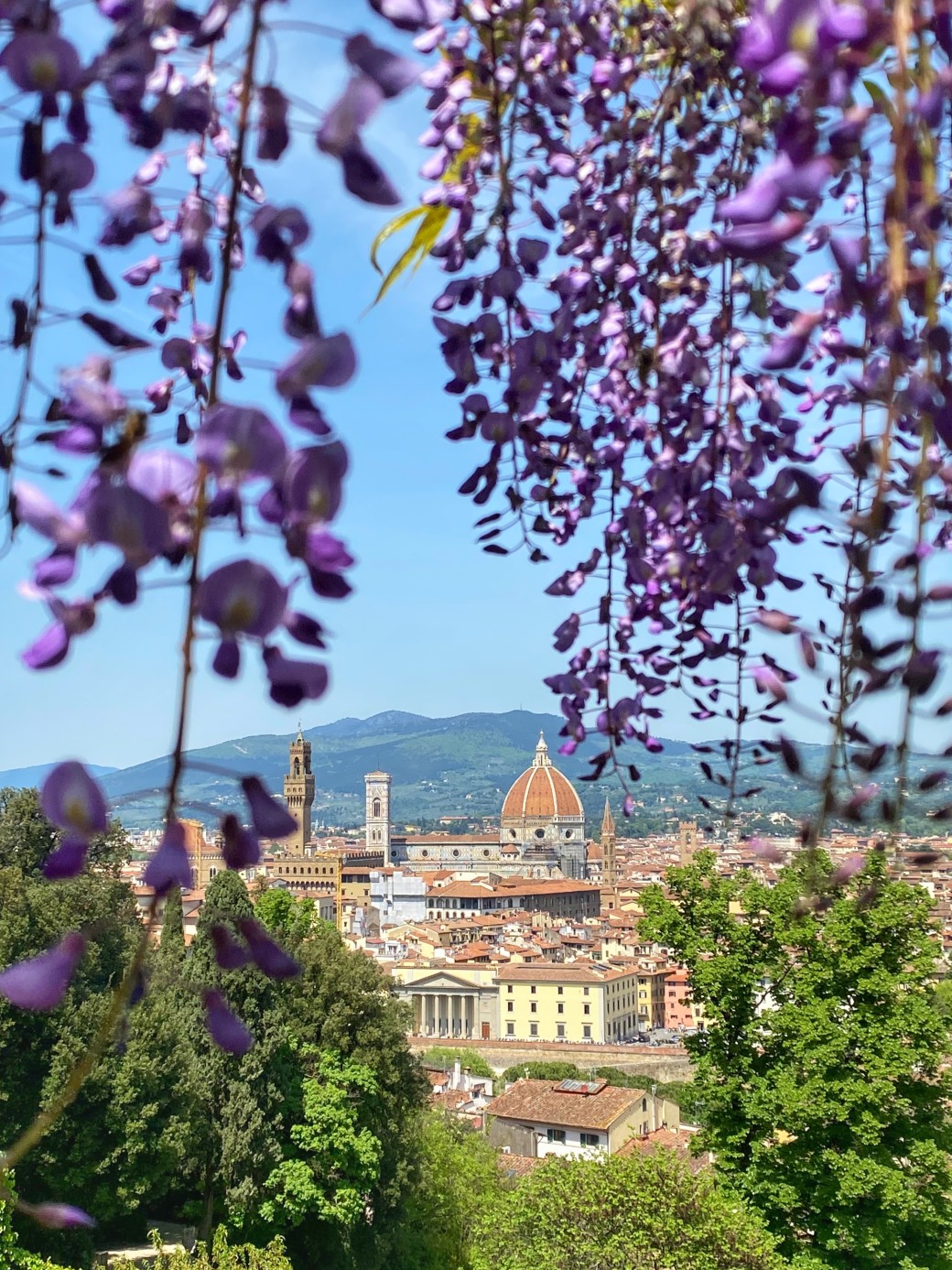 Giardino Villa Bardini ph. Martina Olivieri
Giardino Villa Bardini ph. Martina OlivieriThe gardens were opened again in 2005 and became part of the European Garden Heritage Network, whose headquarters are in Dusseldorf, and are also listed among the Grandi Giardini Italiani. Its history is however rather complex. For many generations property of the Mozzi, a family of bankers, it was divided and sold over the centuries, then the family bought it back.
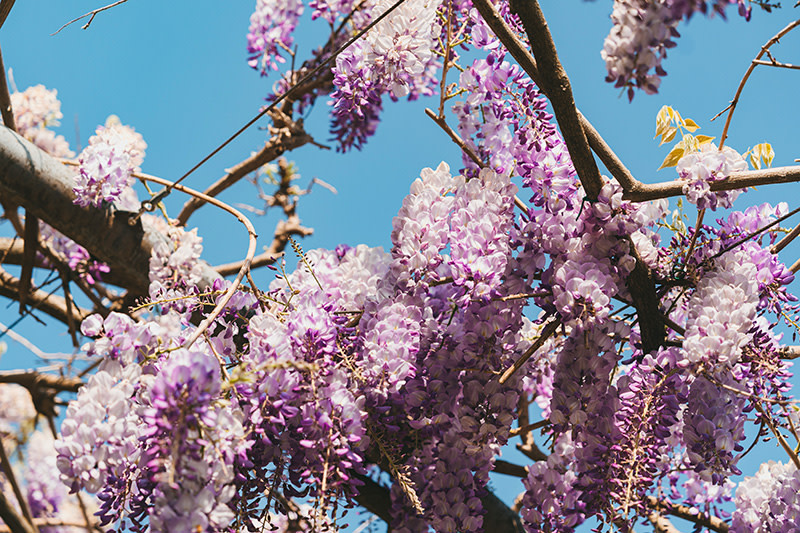 Il glicine di Villa Bardini (ph. Mulas Studio Casati)
Il glicine di Villa Bardini (ph. Mulas Studio Casati)In the 14th century it was a hortus conclusus, a walled orchard, as shown by the 15th century layout by Bonsignori. The city of Florence bought the property after the bankruptcy of the Mozzi. Like the Bardi and the Peruzzi, they had lent money to the king of England Edward III, who had not been able to pay it back as England was fighting a strenuous war against France. In the 17th century the garden was split into two properties.
The one towards Costa San Giorgio became part of the estate of Villa Manadora, designed by Gherardo Silvani. Today this villa houses the Capucci and Annigoni museums and hosts contemporary art exhibitions. In that period it was a geometric garden with woods of ilex and its defining feature was a monumental baroque stairway introduced by the statues of Vertumnus and Pomona and intersected by a winding uphill pathway.
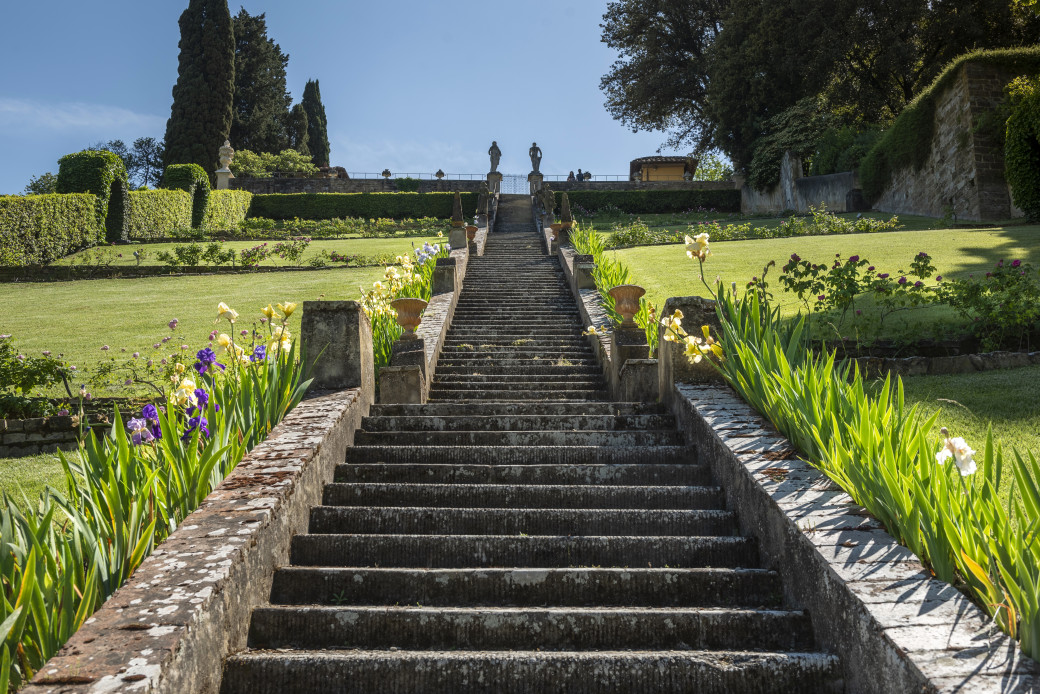 Giardino di Villa Bardini (ph. Pasquale Paradiso)
Giardino di Villa Bardini (ph. Pasquale Paradiso)In the 19th century the Mozzi bought back a portion of the property and built two pavilions, which were used as Kaffeehauses, and Luigi Le Blanc became owner of the wooded plot of land, which he transformed into an Anglo-Chinese garden. Stefano Bardini purchased the entire estate from the Mozzi in 1913. Today it is part of the museum and garden itinerary, along with Boboli.










